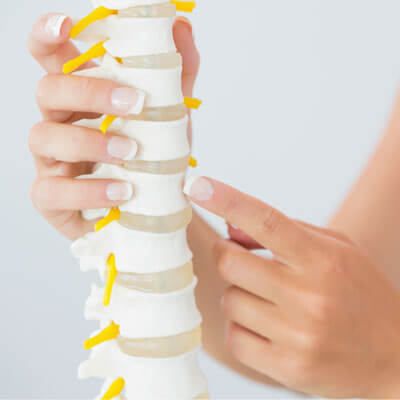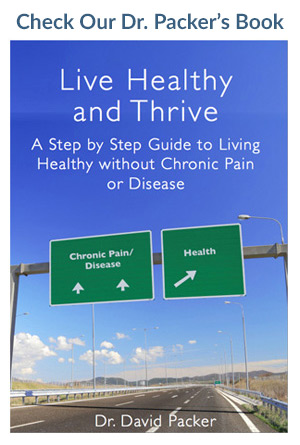 It can be scary to hear that your pain and weakness are due to spinal stenosis, and that it may get worse without intervention. Worse yet, it can be troubling to hear that spinal surgery is one of the treatments for the condition.
It can be scary to hear that your pain and weakness are due to spinal stenosis, and that it may get worse without intervention. Worse yet, it can be troubling to hear that spinal surgery is one of the treatments for the condition.
However, depending on your medical history and the severity of your spinal stenosis, other treatment options are available. This includes chiropractic care, which has been shown to successfully treat spinal stenosis in many people.
As a licensed chiropractor for more than 20 years, I work closely with many patients to manage their pain and symptoms of spinal stenosis without surgery. In this article, I will address many of the common questions my patients ask about spinal stenosis, and how chiropractic care can help treat it.
What is Spinal Stenosis?
Your spinal cord and nerves are protected by your spine. Your spine has openings inside which your spinal cord and nerves are located. These include bony openings called the neural canal where nerves are located, and your spinal canal in which your spinal cord is located.
Spinal stenosis is a condition in which these bony openings in the neural canal and/or spinal canal become narrowed. This compresses your spine or nerves, leading to unpleasant symptoms.
Spinal stenosis can take place in your neck (cervical stenosis), mid-back (thoracic stenosis) or lower back (lumbar stenosis). A person can even have multiple places with stenosis in the spine at the same time, a condition called tandem stenosis. However, lumbar stenosis on its own is the most common form of the condition.
What Causes Spinal Stenosis?
Spinal stenosis occurs when there is narrowing of the bony openings that protects your spinal cord and nerves. A person can be born with narrowed spinal openings. Alternatively, narrow openings can also be caused by a variety of health conditions, such as:
- Bone overgrowth: A person with osteoarthritis of the spine can develop bone spurs which grow into the spinal openings. Paget’s disease, a disease in which a person develops abnormal bone growth, can also lead to too much bone growing in the spinal openings.
- Degenerative disc disease: The discs in your spine act as shock absorbers but can become damaged and may bulge or cause hernias. Herniated discs can then release their contents into the spinal openings, compressing your spine or nerves.
- Thick ligaments: Ligaments are connective tissues that hold the bones of your spine together. Over time, they can become thickened and may buckle or bulge into your spinal openings.
- Tumors: Some cancers may grow inside the spinal openings, putting pressure on your spine and nerves.
- Spinal injuries: Traumatic injuries like car accidents can dislocate or fracture your vertebrae, displacing them and causing pressure on the spine. Inflammation from trauma, including back surgery, can also contribute to pressure inside the spinal openings.
What Symptoms Does Spinal Stenosis Have?
At first, a person might not even be aware that they have spinal stenosis. Sometimes, imaging tests like X-Rays, MRIs or CT scans will find that a person has spinal stenosis even if they do not have symptoms. However, the condition often worsens over time, leading to a range of unpleasant symptoms.
The symptoms of spinal stenosis may be different depending on where in your spine the condition takes place.
If the stenosis is in your cervical spine, symptoms include:
- Numbness or tingling in your upper or lower extremities
- Weakness in your upper or lower extremities
- Walking or balance problems
- Neck pain
- Incontinence of bowel or bladder, in severe cases
If the stenosis is in your lumbar spine, symptoms can include
- Numbness or tingling in your lower extremities
- Weakness in your lower extremities
- Pain or cramping in one or both legs when standing or walking. This pain may get better when you sit or bend forward, as the movement takes pressure off the spine
- Back pain
What are Risk Factors for Spinal Stenosis?
Although anyone can develop spinal stenosis, some people are at a higher risk for the condition than others. This includes those who:
- Are over age 50
- Have experienced spinal trauma, like a car accident
- Have a spine deformity like scoliosis
- Have a genetic musculoskeletal disease
- Although you cannot control many of your risk factors for spinal stenosis, you can minimize your risk of developing or worsening the condition:
- Maintain a healthy weight
- Exercise regularly
- If you smoke, stop smoking
- Practice good posture
How is Spinal Stenosis Treated?
Spinal stenosis can be treated in a variety of ways. This includes both surgery and conservative, or non-invasive management. Surgery can treat spinal stenosis by increasing the amount of space in the spinal openings. This is achieved by the surgeon removing elements like laminae, facets, osteophytes, ligaments, synovitis or synovial cysts. This process, called spinal decompression, can cause instability in the spine. For this reason, the surgery may also perform a spinal fusion during the procedure.
One large study showed that there was little evidence that surgery had advantages over conservative treatments of spinal stenosis. In this study, surgery had no clear benefits over non-invasive treatment of spinal stenosis. Further, surgery had up to a 24% risk of side effects, while no side effects were reported for non-invasive treatments. Another study also concluded that non-invasive treatments helped improve walking ability in people with spinal stenosis. Non-invasive treatments included:
- Chiropractic care
- Exercise
- Massage
- Physical therapy
- Acupuncture
- Wearing a brace
- Pain medication
- Cognitive-behavioral therapy
Non-invasive treatment treats spinal stenosis in a variety of ways. It can improve pain perception, mobility, and promote healthy behaviors. Further, multiple non-invasive strategies can be used at the same time, helping to promote treatment success.
What is the Prognosis for Spinal Stenosis?
Spinal stenosis does not usually heal on its own unless it is caused by a bulging or herniated disc, which may get better on its own. For this reason, treatment is usually needed to delay or reverse the condition.
Treating Spinal Stenosis at Precision Spinal Care
If you are seeking conservative care for spinal stenosis, it is important to choose a doctor who is specifically credentialed in spinal biomechanics. These providers will be able to perform a biomechanical spine assessment and give recommendations on how best to treat your condition.
My experience and expertise in spinal biomechanics allow me to competently and safely address your spinal stenosis. I am trauma and hospital-qualified and have credentials in MRI spine interpretation, spinal biomechanical engineering and orthopedic testing through the Academy of Chiropractic. I am also a fellow in Spinal Biomechanics and Trauma which is recognized through the SUNY Buffalo Jacobs School of Medicine.
At your first visit, I will review your medical records and perform a thorough examination. After your exam, we will discuss my findings and I will answer any questions you have.
If we decide that chiropractic care is not the best treatment for your spinal stenosis, I will refer you to the appropriate provider to best meet your needs.
At Precision Spinal Care we are happy to help you determine the best way to treat your spinal stenosis. Call our office at (757) 382-5555 to speak with me or set up a consultation. You can also set up an appointment through our webpage.

